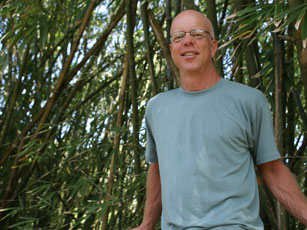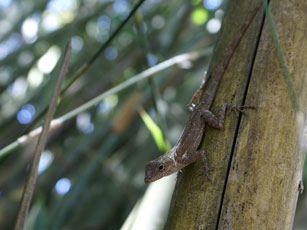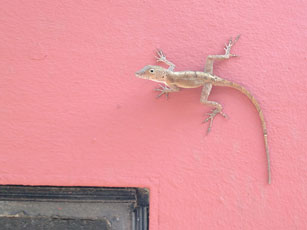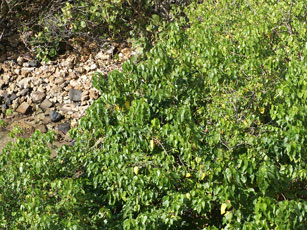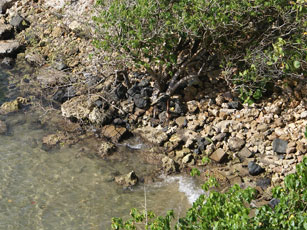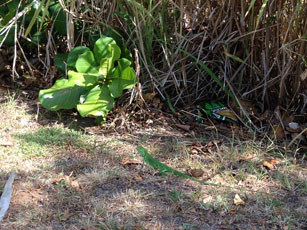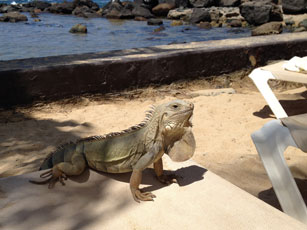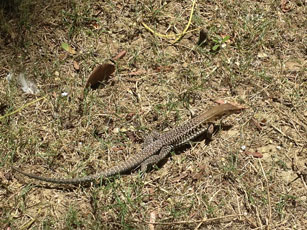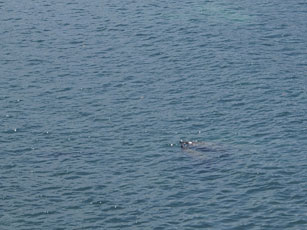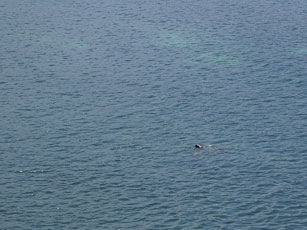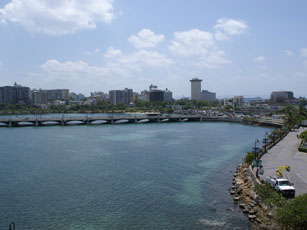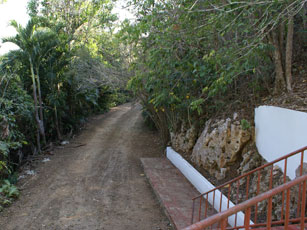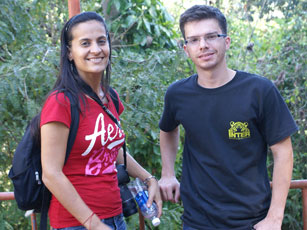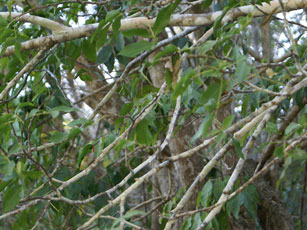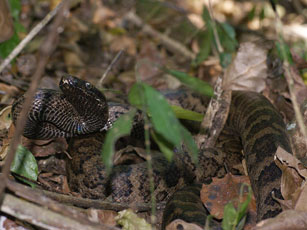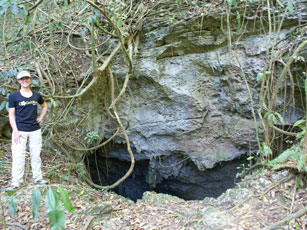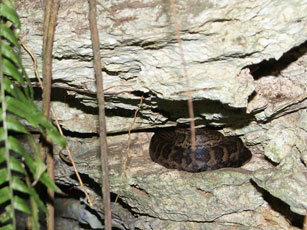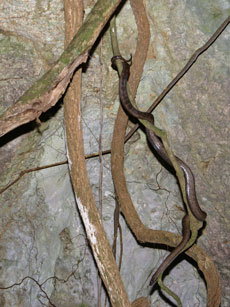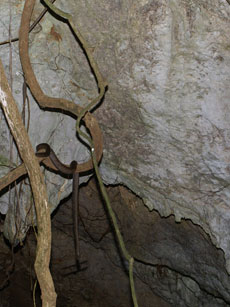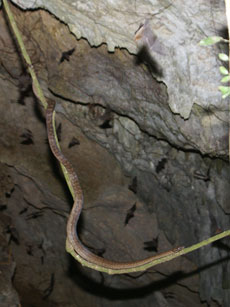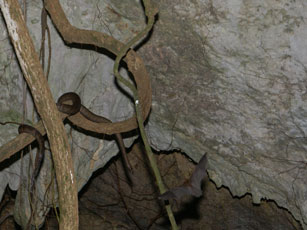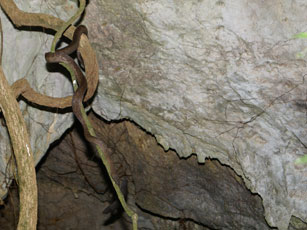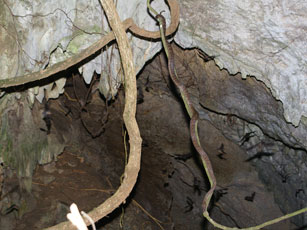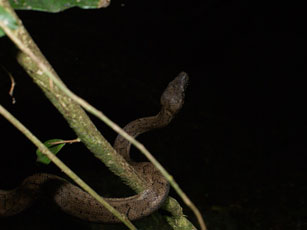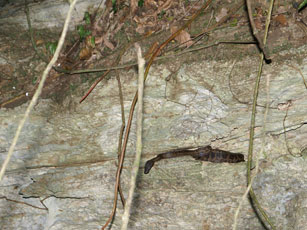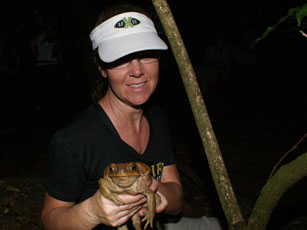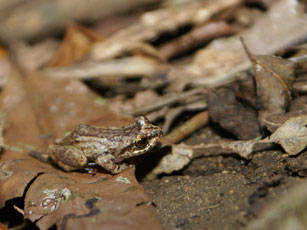
3-26-14
Trip Details
Location: Puerto Rico
Weather: Highs in the mid-eighties, humid.
Time: Various
Herpers: Jim Scharosch, Laura Scharosch
Account by: Jim Scharosch
Photos by: Jim Scharosch (except where noted)
This was a vacation trip, not really a herp trip. I travelled to Puerto Rico with my wife Laura. She was going to run a marathon and we would spend the majority of the rest of the trip on the beach tipping Mojito’s and Medalla beer. I did want to do a little herping though, so before we left I contacted the Mata de Plátano Field Station and Nature Reserve to see if it would be possible to arrange a visit to Cueva Culebrones, or Cave of the Boas. I visited via email with Armando Rodriguez who was very helpful in setting us up with a guide to take us to the cave.
Before we get into the trip to the field station, here are a few pics of some of the standard herps found all over the place in Puerto Rico. These pics were from throughout the week we spent in Puerto Rico, not just the day of the journey to the field station.
Puerto Rican Crested Anole (Anolis cristatellus)
Green Iguana (Iguana iguana)
This was the view from our hotel balcony. In the first pic there is an iguana in the tree tops. The second pic there is one in the rocks.
Juvenile along the road from our hotel to old San Juan.
Adult catching some rays on a beach chair at the Caribe Hilton hotel beach.
Puerto Rican Ground Lizard (Ameiva exsul)
This guy was about sixteen inches long with tail.
One morning we saw some of the locals looking out into the bay that our hotel room balcony overlooked. We watched to see what they were looking at and soon figured out that there were sea turtles surfacing. It appeared there were three of them. I didn’t have a big enough lens to get quality photos so I don’t know what species they were. I hope they were sea turtles anyway....
This is where they were swimming around.
The day came to go to the field station, so we rented a car and drove out to meet our guides. We met up with Waldemar Robles and Glorienell Pérez at a local restaurant and then followed them down the twisting roads to the field station.
Once there, Glorienell pointed out a small green bird, the Puerto Rican Tody, (Todus mexicanus).
It is an endemic species to Puerto Rico. Like with the sea turtle photos, I’m not really setup for bird photography, so this is the best I got. It was a really pretty bird.
While at the field station Waldemar explained that the cave is home to an estimated 300,000 bats, who fly out every evening to hunt insects. Waldemar was very knowledgeable about the bats. Soon we hiked the short distance to the cave entrance. We looked around a while, and Waledmar spotted a Puerto Rican Boa (Epicrates inornatus) basking in the open at the top of the cave entrance.
I worked my way over and snapped a few photos before it crawled down and into a crevice at the top of the cave entrance. My photos didn’t turn out great because I was battling the mottled light and the snake didn’t sit very long.
Laura and I walked around for a while and found three boa sheds up in the trees, then we settled at the cave entrance to wait for dark and the exodus of the bats from the cave. The boas come out of the crevices at night and hang from the cave walls and branches in an effort to capture bats as they fly out of the cave. While we were waiting we entertained ourselves watching the anoles run around the forest floor and in the trees.
Laura at the cave entrance
After a bit, Waldemar mentioned that he had to head back up to the field station to bring another group down. It was already beginning to get dark, and I shined my flashlight on the cave walls and spotted another boa coiled on a ledge.
As cool as it was to see the one in the open, I was also glad that I spotted one myself.
When Waledmar returned with the other group, we were joined by Dennis Ferraro of the University of Nebraska Lincoln and a group of his students that were in Puerto Rico for a biology class. I had never met Dennis, but we know a lot of the same people. I thought it was kinda funny that while I was in a forest in Puerto Rico I would end up running into someone from a half a state away from my home.
We all sat at the cave entrance as the bats began to fly out. It wasn’t long before a boa emerged from a crevice and began to climb down the exposed tree roots to assume a perch for bat hunting.
Eventually the boa that was coiled climbed down the same path the first boa took. For some reason I didn't take more pics of this one as it crawled down.
Neither boa caught a bat that night so we did not get to witness the feeding behavior beyond them assuming the hunting posture.
Throughout the evening, Waldemar and Glorienell were going into the cave with a bat trap and capturing bats and bringing them up for the us to see. They ended up capturing three of the four species of bats that live in the cave. It was neat to see them, though I didn’t take photos.
At one point Dennis mentioned looking for Marine Toads (Rhinella marina) and it wasn’t more than a few seconds later that he found one. These are a destructive invasive species, but it was still cool to see one.
One of the best known herps in Puerto Rico is a small frog called the Coqui (Eleutherodactylus coqui). The call of this frog sounds just like the name. Images that look nothing like Coqui are emblazoned on countless tourist items in every trinket shop in Puerto Rico. We had heard them calling pretty much everywhere we went, but never made the effort to find one. It was on our list of things to do before we left. One of the students tracked one down so I snapped a photo.
That pretty much wrapped up the herps on this trip. Many thanks to Armando Rodriguez for setting us up for the trip to the field station, to Waldemar Robles and Glorienell Pérez for guiding us and sharing their knowledge of the local wildlife, the bats and the caves, and to Dennis Ferraro for sharing his knowledge of Puerto Rican herps. It was an awesome experience.

